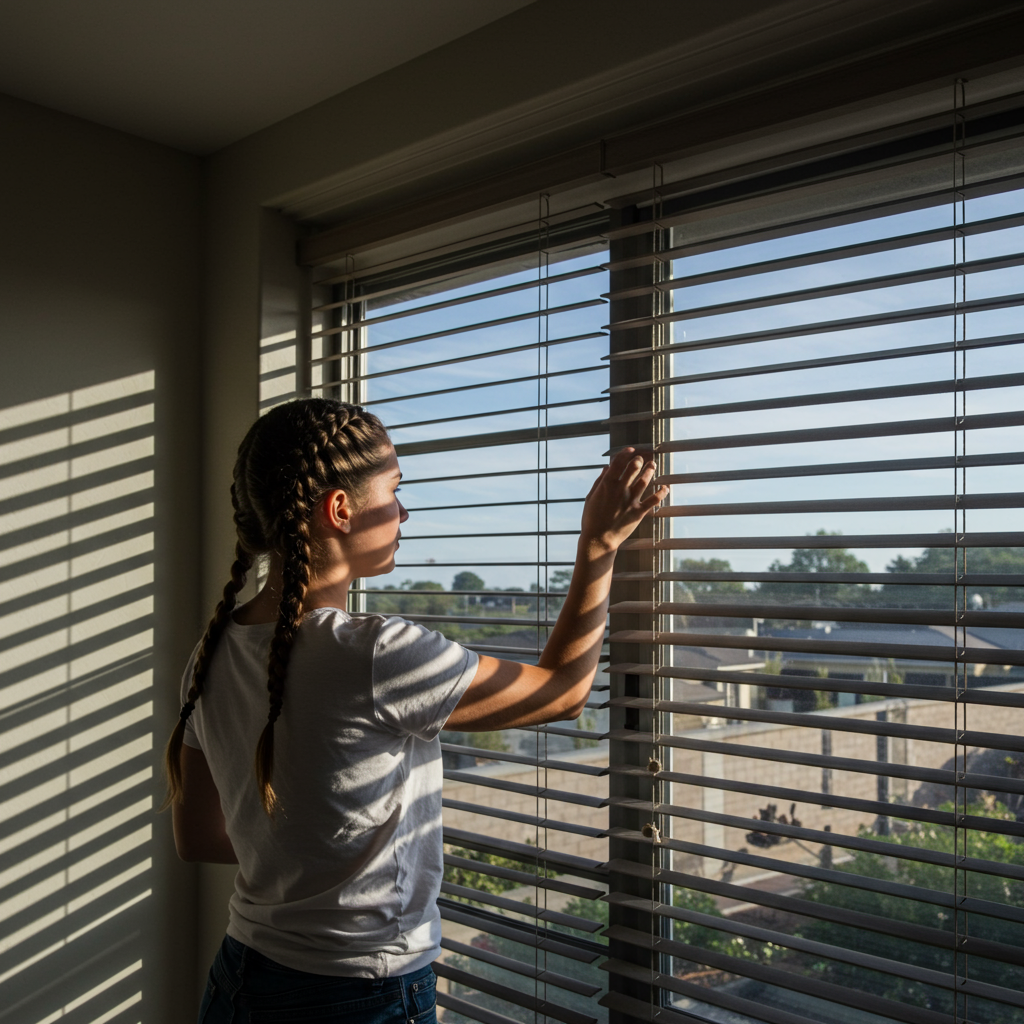Heatwaves are becoming more frequent and intense, turning our homes – often designed to keep heat in during winter – into uncomfortable hotboxes. But you don’t necessarily need expensive air conditioning to find relief. By implementing smart, low-tech strategies, you can significantly reduce indoor temperatures and stay comfortable when the mercury rises. Here’s how to keep your home cool during a heatwave.
Master Your Windows and Ventilation
One of the most crucial steps is managing airflow based on the outside temperature.
Strategic Opening: Avoid the temptation to throw windows open all day. When it’s hotter outside than in, opening windows simply lets the hot air in. Instead, open windows wide overnight or early in the morning when the air is cooler to allow fresh air to circulate and cool the house down. Close them tightly as the outside temperature begins to climb.
Create a Breeze: Maximize cooling by generating a through-breeze. Open windows on opposite sides of your home or on different floors to create a cross-current. For multi-storey homes, opening windows at both the top and bottom floors can utilize the “chimney effect” to draw hot air upwards and out. If you have loft vents, opening these can also help release trapped heat from the upper levels.
Consider Safety: Always ensure windows are secure if left open overnight, particularly on ground floors.
Block Out the Sun’s Heat
A significant amount of indoor heat comes from direct sunlight passing through windows as thermal radiation, warming surfaces and the air inside.
Close Curtains and Blinds: Keep curtains and blinds closed on windows facing the sun during the hottest parts of the day. Thicker, lighter-coloured curtains are particularly effective as they reflect solar rays.
External Shading is Key: For the best defence, block the sun before it reaches the window. External shutters, awnings, or even temporary barriers like sheets or damp towels hung outside windows can prevent heat radiation from entering in the first place. Research commissioned by the British Blind & Shutter Association demonstrated a dramatic difference: rooms without shading reached 47.5°C, while those with external blinds stayed below 28°C.
Reflective Film: Temporary sticky films can be applied to windows to reflect sunlight away.
Natural Barriers: Strategically planting trees or large plants near windows can provide natural shade during the summer months.
Use Fans Wisely
Electric fans don’t cool the air; they cool you by moving air across your skin, helping sweat evaporate. They are most effective when the ambient temperature is below 35°C.
Positioning: Position fans strategically. Pointing a fan towards an open window when the outside air is cooler can help draw that cooler air in. Alternatively, placing fans to face out through windows can help expel hot, stuffy air from the room. Using multiple fans can create a cooling cross-current.
The Ice Hack: For a localized cool breeze, place a shallow bowl or tray of ice water directly in front of a fan. As the ice melts and evaporates, the fan will blow cooler, slightly misty air over you.
Energy Efficiency: Look for energy-efficient models to minimize running costs. A standard fan can cost as little as 15p-31p per day to run continuously, far less than air conditioning. Fanning the face is highly effective for comfort, while fanning the whole body helps lower core temperature.
Explore Other Cooling Technologies
Beyond standard fans, there are other options to consider.
Evaporative Coolers: These devices blow air through a damp pad, cooling the air slightly as water evaporates. They work best in dry climates and may be less effective in humid British summers. You can replicate the effect by blowing a fan over ice or damp materials, such as a DIY cooler box or by hanging wet towels outside windows.
Portable Air Conditioners: While more expensive than fans and costing significantly more to run (£4.84-£6 per day estimated for continuous use), portable AC units can effectively cool a single room. Be aware they generate heat internally that needs to be vented outside via a large tube through a window, which isn’t always practical and can reduce overall efficiency. Choose a unit with a sufficient BTU (British Thermal Unit) rating for your room size.
Dehumidifiers: High humidity makes heat feel much worse by reducing your body’s ability to cool itself through sweating. While dehumidifiers are often used in winter, reducing humidity in summer can make oppressive heat more bearable. However, many models generate their own heat, so it’s a trade-off. Reducing humidity through other means like shorter, cooler showers or wiping down surfaces can also help.
Minimize Internal Heat Sources
Household activities and appliances generate surprising amounts of heat.
Turn Off Appliances: Unplug or switch off electrical devices when not in use. Washing machines, dishwashers, ovens, computers, games consoles, TVs, routers, and even older incandescent/halogen light bulbs all contribute heat to your home. Switching to energy-saving LED bulbs also helps reduce heat output.
Cook Strategically: Using the oven or hob significantly heats up your kitchen. Opt for cold meals like salads and sandwiches during the hottest hours. If you must cook, do it late in the evening when temperatures drop and you can open windows, or take your cooking outside using a barbecue or camping stove.
Cool Down Your Body
Focusing on cooling yourself directly can provide much-needed relief.
Tepid Showers: Take cool, but not freezing cold, showers or baths. Very cold water can cause blood vessels near the skin to constrict, trapping heat inside your core. Tepid water allows blood vessels to stay open, radiating heat away effectively.
Cold Compresses: Apply a cold, damp cloth or ice pack (wrapped in a towel) to pulse points like your neck, wrists, armpits, or the back of your knees. These areas have blood vessels close to the surface, allowing for faster cooling.
Stay Hydrated: Drink plenty of cold water throughout the day. Prepare bottles of water the night before and chill them in the fridge.
Eat Cool Foods: Enjoy cold meals, salads, water-rich fruits and vegetables (like cucumber and watermelon), and ice lollies.
Clothing and Bedding: Wear loose-fitting clothing made from natural, breathable fabrics like cotton or linen. Use cotton sheets on your bed for cooler nights.
Seek External Cool Spaces
If your home becomes unbearably hot, temporary refuge can be found elsewhere.
Public Buildings: Visit air-conditioned public spaces like libraries, leisure centres, shopping centres, supermarkets, or cinemas. Some local authorities even designate official “cool spaces” during heatwaves.
Temporary Stay: As a last resort, consider the expense of booking a cheap hotel room with air conditioning for a night if the heat is severely impacting your ability to rest or function.
By combining these simple, practical steps – from strategic window management and blocking the sun to smart appliance use and personal cooling tactics – you can significantly improve comfort levels and stay safer during heatwave conditions without relying solely on costly and energy-intensive air conditioning. Long-term strategies like improving insulation and adding external shading can further enhance your home’s ability to cope with future heat.



